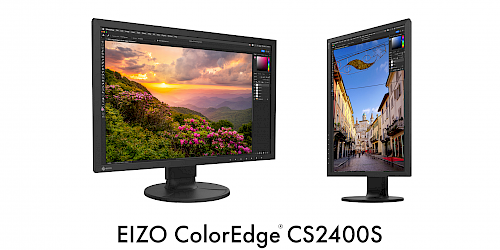Photographer Katerina Belkina

Russian photographer Katerina Belkina is one of the shooting stars of the international art scene. The award-winning visual artist paints with her camera, using digital manipulation to create works of art based on photographs that give the illusion of being paintings until you look closer.
What Belkina aims for most in her work is to seek out the hidden layers in people. In our modern times, which are marked by uniformity, banality and materialism, the artist endeavours to discover the spiritual – and even religious – side of the individual and depict this in various situations. She draws on old paintings and manuscripts as well as on the philosophical traditions that have accompanied her throughout her life for ideas and inspiration for her works. Katerina is the subject of many of her own pieces, which are not to be seen as self-portraits in any conventional sense. Rather, they are intended to express an identification with humanity, people’s existence as noble beings, as well as man and woman’s individual quests, personal dreams and inner demons.
Photos set within a historic context
In her creative work, she is not actively searching for the subjects of thought or drawing solely on her imagination to find them. They spring from everyday life and observations of the people in her surroundings. As Katerina explains: “Choosing a motif for my exploration, I offer the audience a female perspective on things which concern me.” Her ideas are set within a historical context or reference the works of a specific painter directly. This is part of her attempt to come as close as possible to the paintings or literary texts she studies and on which she models her creations. “It has always been fascinating for me to explore the psychology of people’s relationships with each other and with the outside world, to give shape to human emotions. To take joy, despondency, indifference, rapture and jealousy to pieces,” she explains. Feelings are abstract, therefore it is so interesting to look for and find the form of their visualisation. “My face and body are the main instruments I use to incarnate the images I want. Standing in front of the camera as a model, I follow the age-old theatrical practice of playing roles.” It gives impetus to the development of her own manner of narration. A part of her work, taking photographs is akin to a theatrical performance, where an urge to tell the viewer about emotions and feelings manifests itself through the characters in dialogueues with the audience.
The creative process continues on the computer
Katerina works with the camera as well as with other visual techniques from the art world. As she goes on to explain: “A passion for classical art and an interest in everything new – technology, discoveries, experiments – led me to the type of mixed media with which I work. From painting and digital reworking, I take colours and create air as an element of space. Reality and character I take from photography. My style originates from a long artistic tradition – the collage. That is how my characters and spaces come together.” At the next stage, she chooses a brush of a graphics programme. This is a subtle and accurate tool to create a light, weightless atmosphere similar to that of a dream. Katerina strips away the details from her tableaus in order to distil and reveal the essence of the individual.
Why the EIZO ColorEdge CG319X is a great choice
“EIZO monitors have been my number one choice when it comes to editing photos and creating intricate collages for many years now,” Katerina says. At the moment she is using an EIZO ColorEdge CG319X connected to an Apple Mac Pro. “Powerful all-in-one systems with high-gloss monitors were never an option for me. The colours are distorted on the screen. That would have carried over to the subsequent carbon printing process where they would have been rendered inaccurately on matte paper.” For that reason, Katerina has always preferred the matte, antireflective EIZO display panels. “The incredible 31” screen on my ColorEdge CG319X makes it easier for me to work with the many different palettes in Adobe Photoshop.” And because she works with outside printers, the integrated calibration sensor proves to be a great help since travelling back and forth to the printer’s shop to make test copies can be extremely time-consuming.

